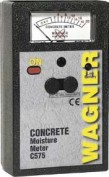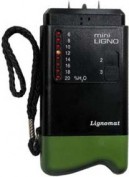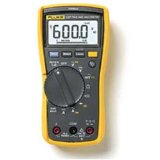Search This Site
Search With Google
If you have a damp problem in your home it could be any of the 6 different types of damp listed below, or even a combination of 2 or more damps. Each particular damp requires a different method of cure.
Condensation
This is damp from the air. Basically it is warm air which contains water vapour being cooled. This can happen from coming in to contact with a colder surface or losing heat by entering cooler atmospheres. When air cools it loses the capability of holding as much water vapour and any excess water vapour is released as water droplets.
Features
Very common in modern day built houses, particularly with those that have had upgrades in energy efficiency.
Causes black patches of mold.
Furniture, soft furnishings and clothes will smell musty.
Wallpaper comes lose from the wall.
Is harmful to health.
Water droplets can be seen on any surfaces that are affected.
Occurs inside walls, in your insulation and under floors.
Rising Damp
Rising damp is caused by ground moisture rising up in to floors and walls of your home. This moisture will continue rising up on its journey until it evaporates or a fresh supply of moisture runs out.
Features
Typically affects just ground floor rooms and basements.
Skirting boards and wood floors can suffer from rot.
The wall plaster could bubble.
On solid floors a white bloom or white crystals can form.
Your wallpaper can show up a brown coloured tide mark.
Harmful to occupants.
Usually found in homes that have had their old original floors replaced by concrete floors.
Types Of Damp
On This Site



Sponsored Links
No matter the age of a house, it will contain moisture. The amount of moisture content will continually vary over a period of time but generally stay within a range dependant upon the actual building itself, the people who live in it and the environment it is in. Moisture can be found in the materials used to build the house as well as in the air within the house.
Now when you think about damp and ask yourself what it is, answering is not as straightforward as one would think. The reason for this is the word itself, damp. By asking what is damp is implying that perhaps your house should be completely dry. But this is not the case as a house requires a certain amount of moisture to keep it in good condition. A certain level of moisture content is also required to keep the occupants healthy as well.
So we shall take the term damp and refer to it as an amount of moisture level content that is higher than the necessary amount of moisture content to keep the house and occupants comfortable.
Moisture Meter Guide 2010 Contact details:garnett65@hotmail.com


The complete moisture meter website
Moisture Meter Guide

6 Different Types Of Damp
Wagner Moisture Meters
General Tools MMD5NP Pinless LCD
General Tools MMD7003 Precision
General Tools MMD8P Multi Species
General Tools MM700D Precision
Penetrating Damp
Penetrating damp is where damp from the rain or damp from the ground enters the walls of your home. It is basically caused by the moisture that enters your home does not have an escape route to follow. Also caused if there is an escape route out for the moisture, but this escape route gets overloaded.
Features
Patches of penetrating damp leave an outlined brown stain.
Your plaster will bubble and get a powdery surface.
Ceilings and walls can be greatly affected.
Harmless to your health.
Mostly found at ground level and particularly in homes that have cavity wall insulation and cement rendered walls.
Is often misdiagnosed as rising damp.
Chemical Damp
Chemical damp is basically caused from salt contamination. When plaster is contaminated by hygroscopic salts these salts will absorb moisture from the air. Chemical damp could of originated when your home was built.
Features
You will see brown staining.
The stain patches will change in intensity with changing weather conditions.
Over the months and years these stain patches will grow in size and intensity.
Very common on chimney breasts.
Harmless to you.
Can and do appear on any plastered surface.
Damp From Plumbing Leaks
These damps are caused by corrosion of the plumbing and plumbing joints in your home. The pipes can corrode internally over time because the pipes are made using different types of metal. Concrete or cement coming in to contact with copper pipes will also cause pipe corrosion over time.
Features
Will show up as a damp patch. Will not be any brown staining, but the patch will grow steadily over time.
Your plaster will show signs of bubbling around the edges of the patches.
Water will appear when the leak is near or even above the surface.
Usually found in homes where the heating pipes are situated in solid floors.
Damp From Floors And Walls Drying Out
Basically caused by moisture content within the structure of your home working itself out from the structure. This type of damp can take months and even years to dry fully. This is because hot air dryers will only dry the moisture content close up to the surface of a material. They do not get to the deeper situated moisture and this moisture has to make its way out.
Features
Shows up as patches that will grow and then shrink over a period of time.
No brown staining.
Often occur after building work or flooding or a long term plumbing leak.
| Tramex Moisture Encounter Plus |
| Tramex Compact Wood Moisture Meter |
| Tramex Concrete Encounter Moisture Meter |
| Tramex Skipper Plus Moisture Meter |
| Tramex Roof And Wall Moisture Scanner |
| Sonin Digital Moisture Meter model 50218 |
| Sonin Digital Moisture Meter 270 model 50270 |
| Sonin Moisture Test Tool model 50210 |
| Sonin Moisture Test Meter Model 50211 |
| Oak |
| Douglas Fir |
| Beech Tree |
| Elm Tree |
| Hickory Tree |
| Maple Tree |
| Pine Tree |
| Prevent And Repair Gaps In Wooden Floorboards |
| How To Fix A Squeaky Hardwood Floor |
| How To Repair A Hardwood Floor That Has Buckled |
| Which Is The Best Firewood? |
| Concrete |
| Concrete Moisture |
| Screed Moisture Meter |
| SDS Drill |
| Belle Cement Mixer |
| SDS Drill Advice |
| Which SDS Drill |
| SDS Drill Accessories |
| Drilling Into Concrete |
| Kennedy Tool Box |
| Moisture - Basic Facts |
| Types Of Damp |
| Wet Rot |
| Dry Rot |
| Mold |
| Water Leak Detection |
| Stucco Moisture |
| Water Damage |
| Moisture And Rust |
| Moisture Damage To A Chimney |
| Wallpaper Stripper |
| Plaster Mixer |
| Why Worry About Moisture Problems |
| Does Your Home Have A Moisture Problem? |
| How To Solve Moisture Problems |
| How To Use Anti Mold Paint |
| Rising Damp |
| Condensation |
| Salt Damp |
| How To Avoid Bathroom Condensation |
| How To Remove Black Mold |
| How To Prevent Bathroom Mold |
| Soldering Kit |
| Soldering Kit Contents |
| Soldering Kit Advice |
| Bonsai Tree Classification |
| Growing Bonsai From Seed |
| Bonsai Tree Care |
| Bonsai Tree Training |
| Bonsai Tools |
| Displaying Bonsai |
| Bonsai Calendar |
| Bonsai Plants |
| The Thirsty Light Curve Moisture Meter |
| The Thirsty Light Ladybird Moisture Meter |
| The Thirsty Light Bumble Bee Moisture Meter |
| The Thirsty Light Butterfly Moisture Meter |
| Hanna Instruments |
| Agratronix Portable Coffee Moisture Tester |
| Lawn Aerator |
| Lawn Roller |
| Lawn Rake |
| Lawn Sand |
| Chainshot |
| Chainsaw Gloves |
| Chainsaw Trousers |
| Chainsaw Boots |
| Mac 4 - 20 XT Chainsaw |
| Mac 738 Chainsaw |
| Mac 842 Chainsaw |
| Mac 20X Power Chainsaw |
| Einhell BG-PC 3735 Chainsaw |
| Einhell BG-PC 4040 Chainsaw |
| Einhell BG-PC 5045 Chainsaw |
| Poulan P3314 Chainsaw |
| Poulan P4018 Chainsaw |
| Poulan Pro PP3816AV Chainsaw |
| Poulan Pro PP4218AVX Chainsaw |
| Poulan Pro PP4620AVX Chainsaw |
| Efco MT 4100 SP Chainsaw |
| Efco MT 3500 Chainsaw |
| Efco 132 S Chainsaw |
| Efco 147 Chainsaw |
| Efco 152 Chainsaw |
| Efco MT 7200 Chainsaw |
| Efco MT 8200 Chainsaw |
| Efco MT 3750 Chainsaw |
| Methods Of Obtaining Soil Moisture Levels |
| Hygrometer |
| Psychrometer |
| Rain Gauge |
| Wave Ventilation System |
| Humidity |
| Hygrometer For Keeping Reptiles |
| Humidor |
| Weather Stations |
| Musical Instrument Storage |